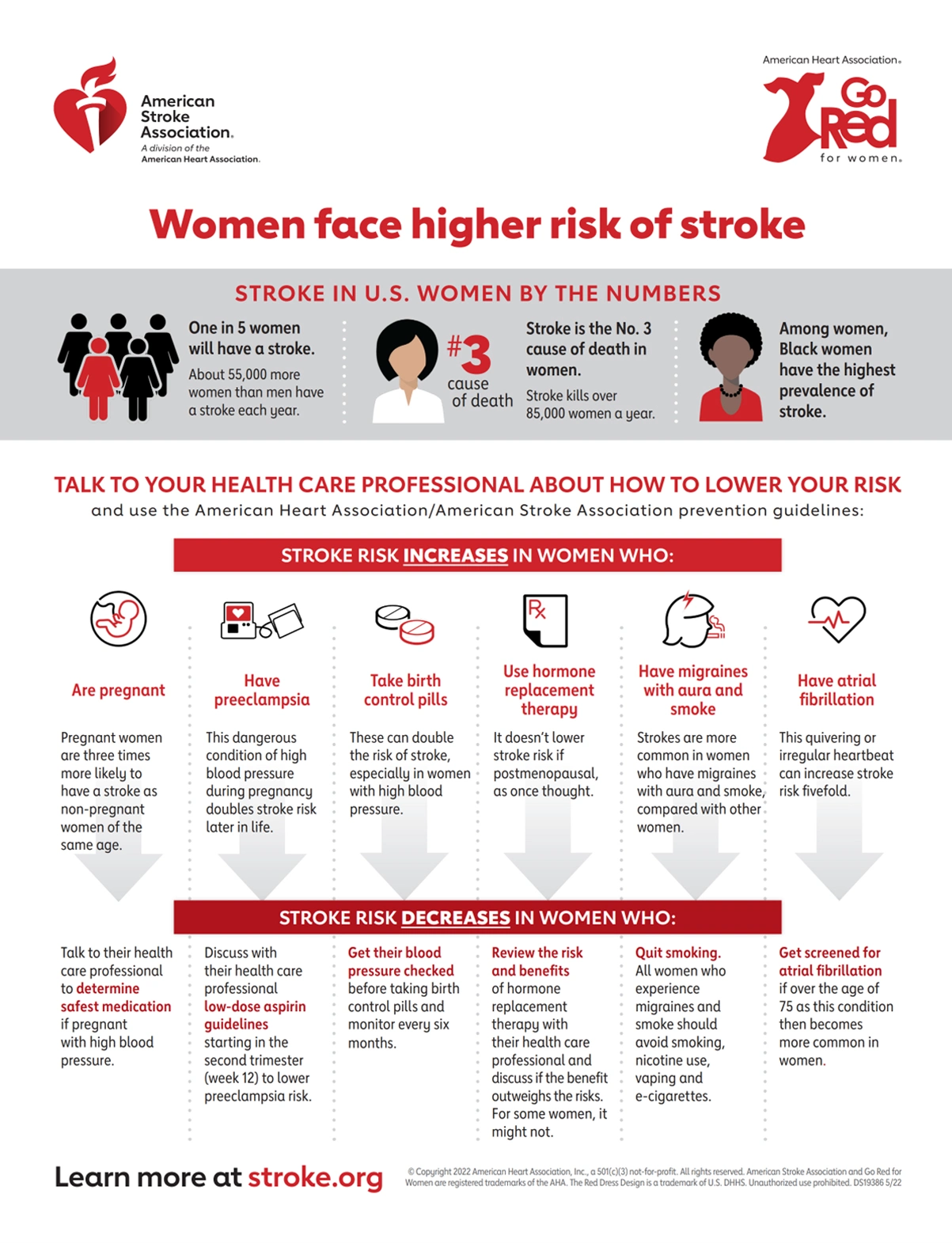Aging, Systemic Disease and Oral Health: Implications for Women Worldwide (Part II)
Course Number: 330
Course Contents
Statistics
Stroke has become a worldwide health concern for women. Traditionally, it was viewed as a man’s disease; however, the reality is stroke and heart disease are the cause of 8.6 million annual deaths and are ranked third among deaths in women globally. With a staggering three million women dying yearly from stroke, 2.1. million are reported dying from hypertensive disease along with some form of inflammatory heart disease. However, women from low to middle-income countries are more likely to become disabled from a stroke than men and additionally suffer from an increase proportion in overall CVD deaths.10 The Office of Women’s Health at the Centers for Disease Control and Prevention identifies stroke as the third cause of death among American women and a leading cause of disability. Stroke has been associated with more than 137,000 yearly deaths representing one in every eighteen people and with someone dying from a stroke every four minutes. Among females 20 years of age and older between 2015 and 2018, 44.4% had some form of cardiovascular disease, compared with 54.1% of males.11 Cancer is still believed to be more of a threat in the minds of women; however, heart disease is more deadly as the number one killer in women than all types of cancer combined, and only one in five women understand heart disease and stroke to be their greatest health risk.12 Hence, the knowledge of stroke risk factors, prevention and treatment is critically important.
Stroke has several modifiable risk factors allowing 80% of them to be preventable; yet 795,000 Americans suffer yearly from either a new or reoccurring stroke.13 It is estimated that 55,000 more American women than men experience stroke and reported one in five women will suffer from a stroke during her lifetime. Women’s stroke statistics report 77,109 deaths in one year versus 52,367 male deaths due to strokes.9 Differences in contributing factors generally indicated at the time women experience a stroke than men are advancing age and poorer health.14 See the infographic from the American Heart Association.15 In one study, black and Hispanic females ≥70 years of age had higher risk of stroke compared with white females after controlling for age, sex, education, and insurance status.16 The American Heart Association reports 3-4% of all people who survived a first stroke are more likely to suffer a second one and women more likely suffer poorer outcomes than men.11
Know Your Risk Infographic15
Stroke is the second-leading cause of death and the third-leading cause of death and disability combined.17 Women wait longer for care than men in hospital emergency rooms, and those women patients coming into the emergency room wait 12 minutes longer to be evaluated and treated.17 Women 65+ represent the largest number of stroke survivors,17and considering their longer life expectancy, among those survivors, women will more likely live alone than men. Subsequently, a woman’s hospitalization will be longer than a man’s, and women will less likely go home or to a rehabilitative facility, yet they are more likely to be transferred to chronic care facilities 18,19 ultimately affecting their quality of life and future independence. Witnessed in both developing and developed countries worldwide, stroke has become one of the five most important causes of disability,20 killing six million annually, and leaving five million permanently disabled.21
Worldwide, stroke among the 60+ age group is the second leading cause of death after CVD and fifth leading cause in ages 15-59 (Figure 3).22 Without worldwide interventions, it is estimated by 2030 there will be 7-8 million deaths from 23 million strokes yearly.23 The incidence of stroke has been declining in many developed countries; however, the actual number will increase due to aging populations, and worldwide projections indicate stroke becoming the second cause of death following ischemic heart disease among these aging populations.20
Figure 3. Global Stroke Facts.
- The burden of stroke is particularly serious in Asia; its mortality is higher than in Europe or North America.16 In China, there are 2.5 million new stroke cases each year and 7.5 million stroke survivors.17
- Stroke has been reported as the third leading cause of death among Canadians. On a yearly basis, 14,000 Canadians die from stroke representing more women than men.18
- Stroke is the third biggest killer in the UK and cause over 36,000 deaths.19
- There are more than 100,000 strokes in the UK each year. That is a stroke at least every 5 minutes.19
- In the Middle East and North Africa stroke is increasingly becoming a major health problem, with projections that deaths from it will nearly double by 2030.20 In fact, 87% of global stroke mortality rates are occurring in low and middle-income countries.15


